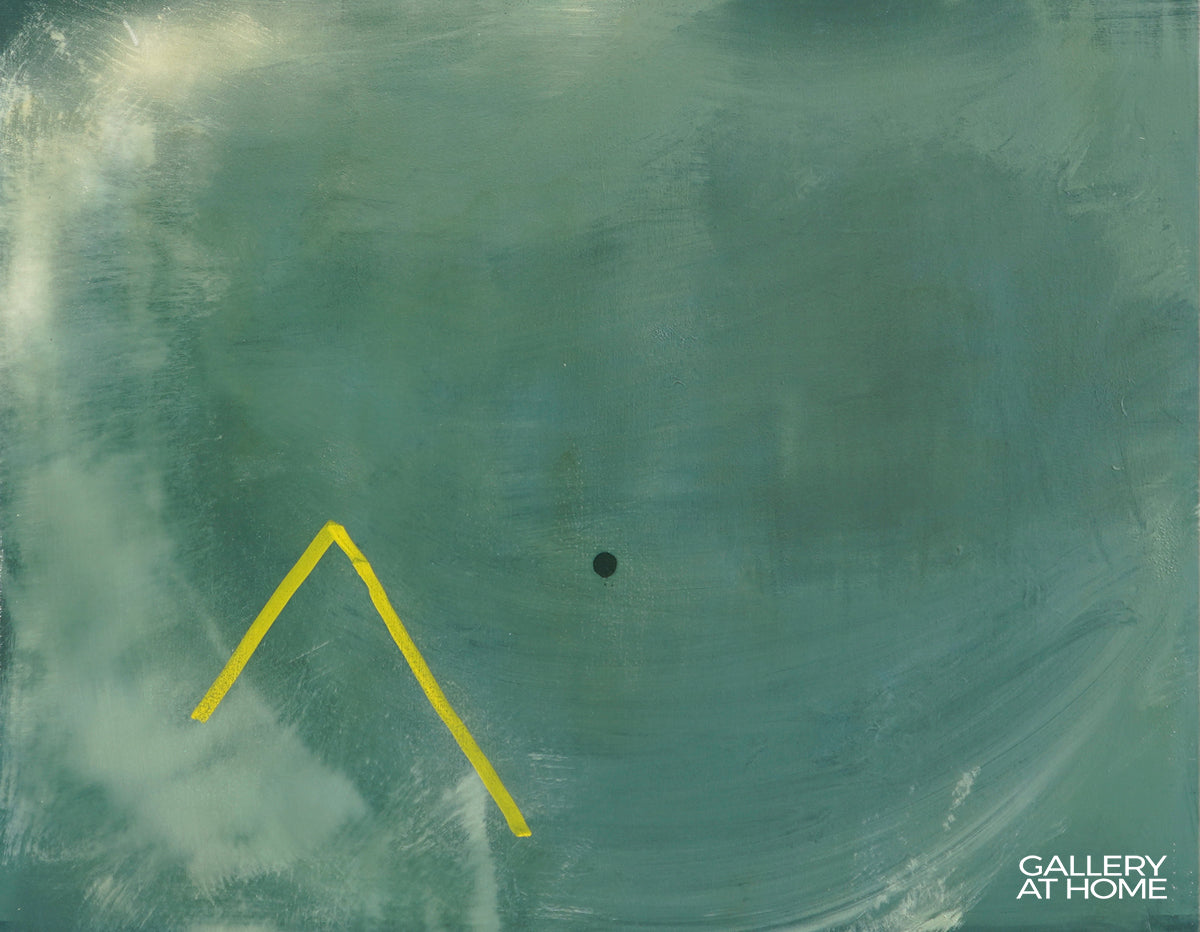


Obscura
NOVEMBER 2022
"The metaphysical aspect of Lock’s work has gained in complexity as his painting has evolved. Whereas early on it could be seen to allude to the spiritual in nature, it is often now more mysterious, its resonances less easy to define. In much of the work there is a sense of implied presence; that of the artist’s own body certainly, but also of things altogether more abstract that relate to points of transition in life, and perhaps in death. In all of this, the conduit is light, which in Lock’s paintings is rarely static. He has continued to make paintings that evoke the weather, with as before hints of the romantic sublime, in effects as delicate as mist or as dramatic as the aurora borealis. Spatial divisions often suggest horizon lines: meetings between land and sea or sky, and certain of his titles refer directly to landscape and the elements. But there are also canvases that are notably different in tenor and mood. Some appear to emanate luminosity from within, as though backlit, bestowing a benign visitation of light. Whites tend to contain or withhold light, or serve as a ground over which a colour – yellow, blue perhaps – is gently dabbed, forming a veil of subtly glowing inflections.
This theme of light extends also to Lock’s interest in photography, which can be seen to have influenced his painting, with its various degrees of clarity and focus of shape and edge. One might think of the camera’s lens as being rather like that oval mirror, dragging the world into itself before then returning an abstracted version to us in its images. Lost photographs, unmoored from their original context, fascinate Lock. Among his trove of reference imagery is a blurred and hardly readable photograph he made from a found photograph of Lake Mohonk in New York, dated from the 1950s. He is intrigued by the way in which it conjoins and merges moments that are decades apart, and how it speaks of the elasticity of time and memory, of the poignancy of that which can and cannot be vouchsafed.
The themes of language, time, presence and absence are encapsulated in an ongoing series of works that Lock has made on the inside covers and title pages taken from discarded books. Amongst these found volumes are some dated from the nineteenth century, bearing inscriptions and dedications, carefully written in copperplate script by those now long departed. Others have lines of type, set in metal galleys and printed as headings or subheadings. The substrates often show signs of age, in mottled foxing, scuffmarks and minor tears, themselves eloquent of human usage and the passage of time. The artist’s additions, in graphite, oil pastel, ink or paint, join forces with these existing marks and texts, in a form of joint authorship that links past with present. Lock might add very little; a scattering of gnomic signs perhaps, akin to some kind of automatic writing. Alternatively he might put down blocks of colour or densely scrawled lines that cover all or most of the surface, entombing what lies beneath. There are occasional punctuations and anchor points made from fragments of paper collage or splodges of pigment, the likes of which are also often found in the artist’s canvases. These drawings, much smaller than the paintings, allow for a shift of gear, in which marks are made from the wrist as opposed to a sweep of the arm. And they commune, not only with the past but also with the larger work as it continues to develop in the studio." - Dr Ian Massey
